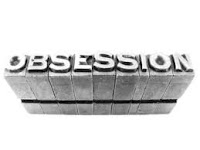A student writes: "I have a general question about use of the 4th finger. I find myself often considering avoiding the 4th finger on both chords and running passages because I feel mine is too weak. But this avoidance can come with other problems or compromises."
My response: Unless you've had an injury to your fourth finger or have some other ailment, there is nothing wrong with it; it is not weak. It can seem weak if we try to lift it away from the hand, something that it wasn't designed to do. As you probably know, there is tissue that connects the fourth to the third on the top of the hand. The fourth finger can, however, be made to feel strong by making sure that the arm is behind it and that it plays as a part of the hand, not separated from it. There's really more here to discuss, but I don't want to pummel you to death with words.
The student continues: "I am presently learning Gershwin's own arrangement of 'Fascinatin' Rhythm' from the Gershwin Song Book. In measure 12, the first RH chord (A-flat triad in 2nd inversion) must be played with 2-3-5 or 2-4-5. Although 2-4-5 is more comfortable in terms of less stretching, I use 2-3-5 because it feels more solid using the 3rd finger. The compromise is the extra stretching involved. Neither fingering is ideal."
My response: Since we select fingering in order to avoid stretching, it isn't reasonable to stretch in order to avoid the fourth finger. In the example, measure three above, fourth finger on A-flat works very nicely if you angle your hand slightly to the right. I call this scissors. This puts more arm weight on the outside of the hand. Incidentally, the last beat of the previous measure can be played with 1, 2, 5 on the C-seven chord, repeating the thumb on the B-flat. This puts your hand in a perfect position to play the triad on the downbeat in measure 12. There are other possibilities involving other technical concepts, but you really don't need to avoid four.
He continues: "In the very last measure of the piece the fast RH run (G, B-flat, C, E-flat, G) is probably meant to be played using RH 1-2-3-4-5 but this also feels weak to me."
My response: In the final measure, don't feel locked into any fingering or hand division. If you don't like the division as printed, play the first E-flat a little bit by itself, giving the hand time to open for 3, 2, 1 in succession to G. Start the right hand on B-flat with 1, 2, 3, 5 and cross with left for the top note. In this sense we are seeming to avoid the fourth finger, but not because it's weak or wouldn't work in this passage, but rather to toss off a flourish easily. The division of hands as printed also works using the fourth on E-flat if you tilt your hand slightly to the right (scissors) as in the previous example. Be sure to take your thumb with you; don't leave it on the G.
There's no shame in looking for facile fingerings. But if we learn how to use the fourth finger to its best advantage, with the arm providing the weight it needs rather than trying to lift it away from the hand, it can serve us very well.
On a related issue, another pianist asks if he should practice octaves fingered, that is, using the fourth and fifth fingers. In this case, I encourage avoidance of the fourth finger.
 If the hand is large enough to use the fourth finger without reaching to an extreme, one might get away with fingering octaves. But the possibilities for injury are great. Think for a moment about all of the repetitions necessary for working up a showy octave passage. If in any of these iterations the hand tenses, there could be a build up of unnecessary strain.
If the hand is large enough to use the fourth finger without reaching to an extreme, one might get away with fingering octaves. But the possibilities for injury are great. Think for a moment about all of the repetitions necessary for working up a showy octave passage. If in any of these iterations the hand tenses, there could be a build up of unnecessary strain.
I recommend that all octave passages be played with five. The method I use is a combination of staccato and rotation, feeling hinged at five, which is difficult to explain without demonstrating. Fast octaves cannot succeed with just an up and down arm movement. Some will advocate that octaves originate from the wrist, which is not true, although the wrist remains flexible.
For speed, try staying in line with the black keys in order to avoid extra in and out movements. In smaller hands this can be more difficult, as octaves feel smaller at the outer edges of the keys. In this case, when there are two or more white octaves in succession, it is possible to shape out, toward the torso. Also, group them according to the musical direction and/or leaps vs steps, as in the second-page octaves in the Liszt sonata or the opening of the E-flat concerto. Octaves can also be shaped over and under, as in the left hand passages in the A-flat polonaise of Chopin. (For a glimpse of this shaping, listen to Rubinstein in the Listen tab above.) Make sure to keep track of a pulse in extended passages like those in the Tchaikovsky concerto. The hands need milestones in order to stay organized. Fast, even legato-sounding octave passages can be achieved using all fives.













